Tennis shoes have evolved significantly from the simple, flat-soled footwear of the past. Originally designed for basic comfort and durability, today’s tennis shoes incorporate advanced materials and technology to enhance performance and prevent injuries.
Over the years, innovations have focused on making shoes lighter, more supportive, and suitable for various playing surfaces.
Here’s a look at how tennis shoes have changed to meet the needs of players and the demands of the game.
Early Days
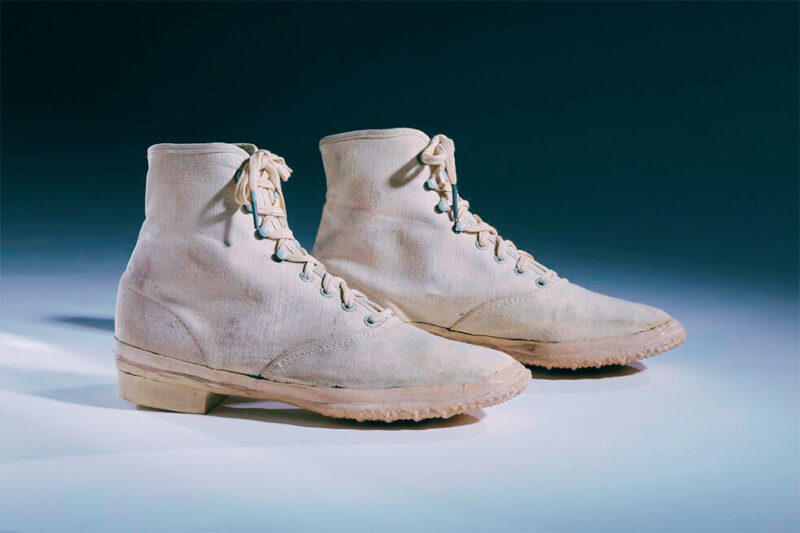
| Model | Brand | Year |
|---|---|---|
| Canvas Plimsolls | Various | 1800s |
| Adidas Tennis | Adidas | 1920s |
| Jack Purcell | Converse | 1935 |
| Keds | Keds | 1916 |
In the early days of tennis, shoes were straightforward and functional. The first model, known as plimsolls, was introduced in the 1800s. They had canvas uppers and rubber soles, providing basic comfort and grip for players on grass courts, the most common surface at that time.
As tennis gained popularity, brands began to create more specialized footwear. In the 1920s, Adidas released one of the first tennis-specific models, which offered better support and durability. The Jack Purcell by Converse, introduced in 1935, became iconic. Named after a famous badminton player, they influenced tennis footwear with their enhanced design.
Keds, established in 1916, also contributed significantly to the evolution of tennis shoes. Their canvas and rubber design became a favorite among tennis players, offering a blend of comfort and flexibility.
Mid-20th Century
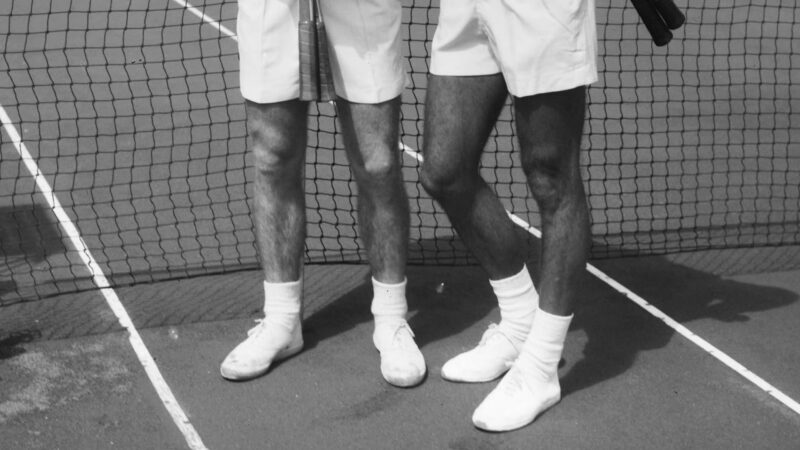
| Model | Brand | Year |
|---|---|---|
| Adidas Stan Smith | Adidas | 1965 |
| Puma Vilas | Puma | 1970s |
| Converse All Star | Converse | 1950s |
| Tretorn Nylite | Tretorn | 1967 |
The mid-20th century saw significant advancements in tennis shoe design, driven by increased competition and the growing popularity of the sport. During this period, brands began to focus more on performance and support, leading to the creation of some iconic models.
Adidas introduced the Stan Smith in 1965, which became one of the most popular tennis shoes of all time. Known for its clean design and durable leather construction, the Stan Smith offered better support and comfort for players on the court.
In the 1970s, Puma released the Vilas, named after the Argentine tennis player Guillermo Vilas. These shoes featured improved cushioning and support, catering to the needs of professional players who required more from their footwear as the game became faster and more demanding.
Converse also remained a key player in the market with its All-Star model, which had been popular since the 1950s. Though originally designed for basketball, these shoes were adopted by tennis players for their sturdy construction and grip.
Another notable model from this era was the Tretorn Nylite, introduced in 1967. These shoes were lightweight and featured a distinctive canvas upper with a rubber sole, making them a favorite among players for their comfort and style.
Graphite Revolution
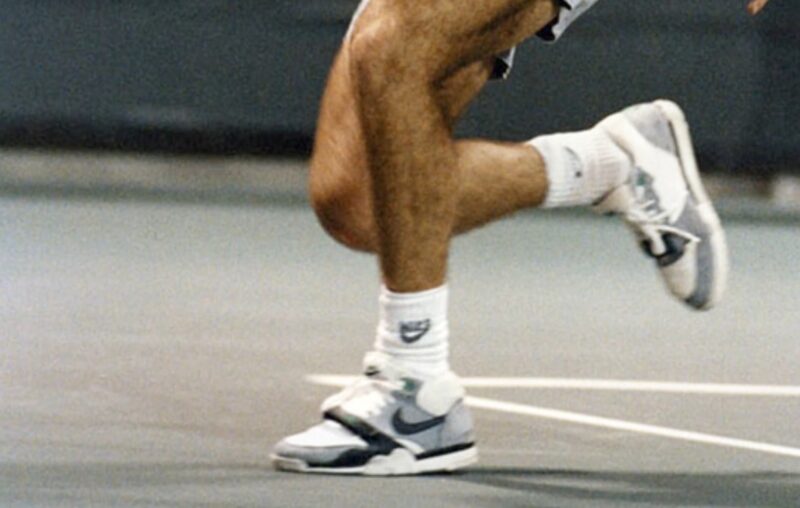
| Model | Brand | Year |
|---|---|---|
| Nike Air Trainer 1 | Nike | 1987 |
| Adidas Lendl Comp | Adidas | 1984 |
| Fila T-1 Mid | Fila | 1980s |
| Reebok Revenge Plus | Reebok | 1985 |
The introduction of graphite in the early 1980s marked a significant turning point in the design of tennis shoes, paralleling advancements in racquet technology. Graphite’s use in racquets made them lighter and more powerful, and this emphasis on lightweight performance began to influence shoe design as well.
Nike’s Air Trainer 1, released in 1987, was a game-changer. It featured the brand’s revolutionary Air cushioning technology, providing excellent support and comfort. This model became popular not just in tennis but across various sports, showcasing the growing trend of cross-training footwear.
Adidas launched the Lendl Comp in 1984, named after the tennis star Ivan Lendl. These shoes combined lightweight materials with enhanced support, catering to the aggressive playing style of the era. They were designed to withstand the intense movements and demands of professional play.
Fila’s T-1 Mid also emerged during this period, offering a balance of style and functionality. These shoes were favored for their comfortable fit and durability, making them a staple for many players in the 1980s.
Reebok introduced the Revenge Plus in 1985, which became known for its classic design and solid performance on the court. These shoes featured improved cushioning and support, aligning with the evolving needs of players.
1990s to Early 2000s
| Model | Brand | Year |
|---|---|---|
| Nike Air Zoom | Nike | 1997 |
| Adidas Barricade | Adidas | 2000 |
| Reebok Court Victory Pump | Reebok | 1990 |
| K-Swiss Classic | K-Swiss | 1990s |
The 1990s and early 2000s were a period of rapid advancement in tennis shoe technology. Brands began to focus heavily on incorporating new materials and cushioning technologies to improve performance and comfort.
Nike’s Air Zoom series, introduced in 1997, featured responsive cushioning and lightweight construction. The Air Zoom technology provided excellent shock absorption, making it a popular choice for both professional and amateur players. These shoes allowed for quick movements and better agility on the court.
In 2000, Adidas launched the Barricade series, which quickly became renowned for its durability and support. The Barricade shoes were designed to withstand the rigors of hard-court play, offering stability and cushioning to prevent injuries. This model set a new standard for tennis shoes and is still popular today in its updated versions.
Reebok’s Court Victory Pump, released in 1990, featured an innovative pump technology that allowed players to adjust the fit of their shoes. This customization provided enhanced support and comfort, making it a favorite among many players. The unique design and functionality of the Pump technology were groundbreaking at the time.
K-Swiss also made a significant impact during this period with their Classic series. Known for their comfortable fit and stylish design, K-Swiss shoes were popular both on and off the court. They offered a good balance of support and flexibility, suitable for various playing styles.
Modern Era
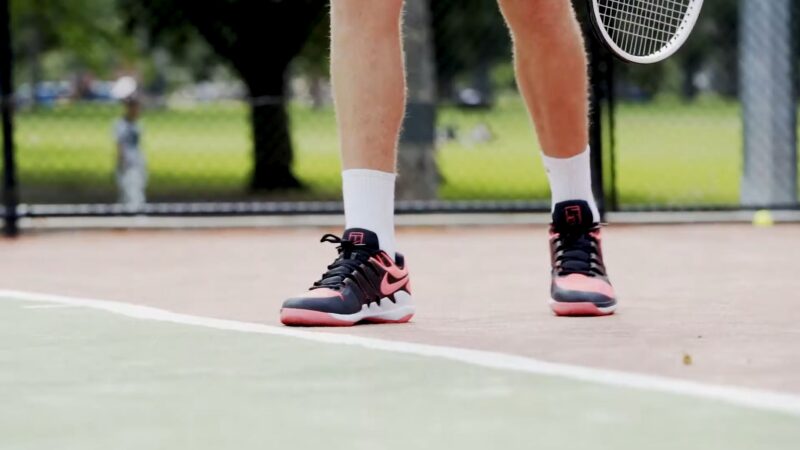
| Model | Brand | Year |
|---|---|---|
| Nike Air Zoom Vapor X | Nike | 2018 |
| Adidas Barricade Boost | Adidas | 2017 |
| Asics Gel-Resolution 8 | Asics | 2020 |
| New Balance Fresh Foam Lav | New Balance | 2019 |
In the modern era, tennis shoes have become highly specialized pieces of equipment designed to maximize performance and minimize injury. Advances in materials, cushioning, and overall design have led to shoes that are not only more comfortable but also provide superior support and durability.
The Nike Air Zoom Vapor X, introduced in 2018, is a prime example of modern innovation. These shoes feature Nike’s Zoom Air cushioning technology, providing responsive cushioning and a low-profile feel. The Vapor X is known for its lightweight design and excellent traction, making it a top choice for many professional players.
Adidas continued to evolve its Barricade series with the Barricade Boost in 2017. These shoes incorporate Boost cushioning technology, offering unmatched energy return and comfort. The Barricade Boost also features a durable outsole and supportive upper, making it ideal for aggressive players who need stability and resilience on the court.
Asics has made significant strides with its Gel-Resolution 8, released in 2020. These shoes use Gel technology for cushioning, providing excellent shock absorption. The Gel-Resolution 8 is praised for its balance of comfort, support, and durability, making it a favorite among players who demand high performance from their footwear.
New Balance entered the high-performance tennis shoe market with the Fresh Foam Lav in 2019. These shoes feature Fresh Foam midsole technology, offering plush cushioning and support. The Fresh Foam Lav is designed to provide stability and comfort, catering to players who need reliable footwear for intense matches.
Fashion and Endorsements
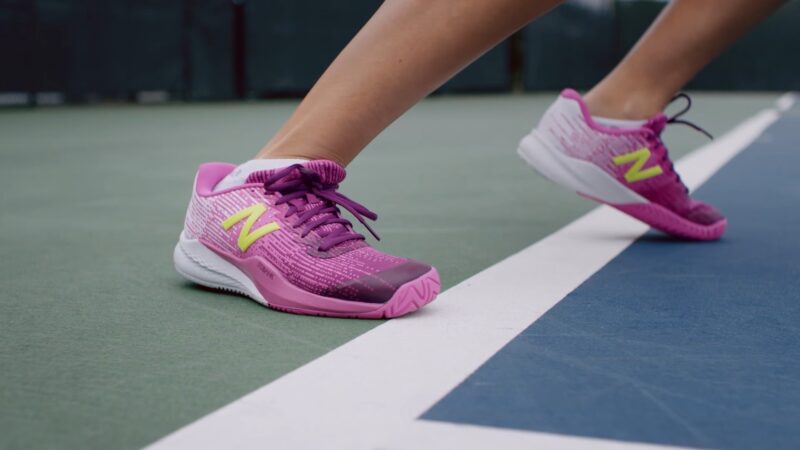
| Model | Brand | Year |
|---|---|---|
| NikeCourt Flare | Nike | 2015 |
| Adidas Stella McCartney Barricade | Adidas | 2013 |
| Asics Gel-Resolution Novak | Asics | 2018 |
| New Balance 996v3 | New Balance | 2017 |
In recent years, tennis shoes have also become a major fashion statement, with top brands collaborating with designers and athletes to create stylish and functional footwear. This era has seen the rise of high-profile endorsements and signature shoe lines, blending performance with personal branding.
Nike’s NikeCourt Flare, introduced in 2015, was designed in collaboration with Serena Williams. These shoes are known for their unique design and high performance, reflecting Serena’s influence both on and off the court. The NikeCourt Flare combines style with advanced support and stability features, making it a favorite among many players.
Adidas teamed up with fashion designer Stella McCartney to create the Stella McCartney Barricade in 2013. These shoes are a perfect blend of fashion and function, featuring a sleek design and high-performance materials. The collaboration brought a new level of style to tennis footwear, appealing to fashion-conscious players.
Asics introduced the Gel-Resolution Novak in 2018, endorsed by Novak Djokovic. These shoes feature Asics’ advanced Gel technology for superior cushioning and support. The Gel-Resolution Novak combines high performance with the personal style and preferences of one of the top players in the world.
New Balance’s 996v3, released in 2017, is another example of how tennis shoes have embraced both fashion and performance. These shoes feature a modern design with New Balance’s signature comfort and support technologies. The 996v3 is popular among players who value both aesthetics and functionality.
Conclusion
Tennis shoes have come a long way. From the simple designs of the early 1900s to the high-tech footwear we see today, each era has brought improvements in comfort, support, and performance.
The early days focused on basic functionality, while the mid-20th century introduced more durable and supportive designs.
The 1980s saw the introduction of lighter materials like graphite, and the 1990s brought advanced cushioning and stability features.
Today’s tennis shoes are a blend of cutting-edge technology and fashion, often endorsed by top athletes.

